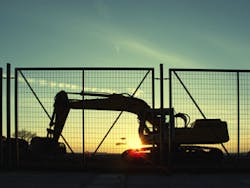Metallurgy and Welding 101: The Basics for Doing Hardfacing and Other Welding for Construction Equipment Repair – Part 4
The continuation of an interview with Thomas J. Black, manager of hardfacing and high-alloy products for The Lincoln Electric Company in Cleveland, OH
You discussed how to select the most appropriate hardfacing material. But what are the guidelines for selecting the buildup material itself?
b>Black: The first step in selecting an appropriate buildup material for a hardfacing application is for the welder to identify the base material he plans to weld to. Is it a carbon steel, a low-alloy steel, a high-alloy steel, a high-manganese material, or something else?
Once the welder has identified the base material, he can then determine the most appropriate buildup material and the temperature to which the base material must be preheated before welding can begin. It is true that some welders do not preheat the base material—or do it incorrectly—an omission that increases the probability that the base material will crack during welding.
A good rule of thumb on the temperature to which the base metal has to be preheated is this: If it is a 0.2% carbon steel, heat the base metal to 200ºF; if 0.3% carbon steel, preheat to 300ºF; if 0.4% carbon steel, preheat to 400ºF; and so on.
The base metal must be kept at that temperature as a minimum, throughout the welding process, or cracking can result. But it would be OK to let the temperature rise 200º-300ºF above that minimum temperature. The base metal can be preheated using an oven, an oxy-fuel torch, or an electric-resistance heating blanket.
How does a welder determine the character of the base metal to which he is welding; what sort of steel or steel alloy it is?
Black: The first step is to find the manual on the construction equipment. This will often indicate the types of steel used for the various components. He might also call a dealer of that particular type of construction equipment and ask. If those approaches do not work, he could then run some simple tests to find out. If a magnet does not stick to the metal surface, that suggests that the base metal is either stainless steel or Hadfield manganese. If the magnet does stick to the surface and the surface is rough and very rusty, then the base material could be cast iron. If the magnet does stick and the surface is not rough or rusty, the next step would be to chisel off a chunk of the metal surface. If he is able to shave off the surface, that indicates the base metal is a carbon steel. If it comes off as a chunk, it is cast iron. If the chiseling creates a dent in the surface, and if when hit again nothing happens, that is an indication that the first blow work-hardened the dented area. Such metal behavior suggests that the base metal is a manganese steel.
Now if these above tests suggest that the base metal is a carbon steel, the question then becomes, “What is the carbon content?” To find out, it is simply a matter of running a spark test by touching the base metal with a grinding wheel. If a large number of yellow sparks are thrown off, that indicates the carbon content of the steel is 0.25% or less.
If, on the other hand, there are fewer sparks and they are of reddish color with tails trailing, and if the total length of the sparking is less than 2 feet, that suggests that the base metal is a steel with about 0.4% carbon. If there are no sparks at all or very few, then the base metal is likely a chromium carbide alloy.
You said there is a wide range of hardfacing rod and wire on the market. In other words, they have materials available for a wide range of arc-welding techniques?
Black: The vast majority of hardfacing materials are in the form of rod and wire that are self-shielded—that is, that contain fluxes for shielding the molten weld from the atmosphere. There is only a limited amount of hardfacing materials available on the market suitable for gas-shielded arc welding—and those are mainly used in shop








